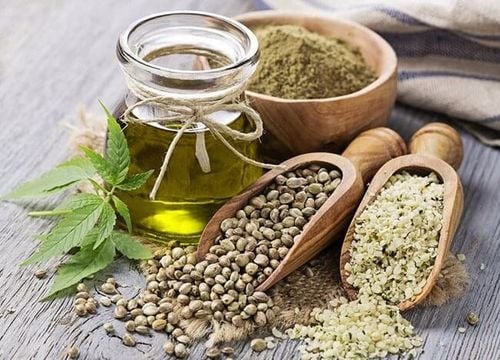This is an automatically translated article.
At 1 year old, babies are entering a period of rapid change with their ability to grow and explore. At this point, toddlers need about 1,000 calories, 70mg of calcium, 600 IU of vitamin D, and 7mg of iron per day to meet growth. Therefore, nutrition for a 1-year-old baby is especially important and a concern of most parents.1. Nutrition for a 1-year-old baby Giving birth and raising a child is a great happiness, accompanied by many difficulties and hardships. In particular, in the first years of a child's life, the first priority of every parent is to take care of the child in the best way. For the comprehensive development of children both physically and mentally, a 1-year-old baby's diet plays an extremely important role. Children become healthier with proper nutrition.
The nutrition provided during the sensitive period from 1-2 years old is a factor affecting the development of children. According to experts, the best nutrition for a 1-year-old baby consists of 3 main meals, alternating between 3-4 breastfeeding sessions. Besides, it is possible to practice giving children soft foods such as vermicelli, pho, noodles, and noodles in addition to familiar foods such as porridge and flour.
Breast milk, fresh milk and dairy products like cheese are very important for the development of a 1-year-old baby. Mothers should practice for children to chew vegetables in family meals at meals. Besides, to ensure nutrition for children, mothers need to diversify food sources, change dishes often, and should not abuse bone broth because it is better to eat something when just drinking water.
One-year-olds need about 1,000 calories divided among three meals and two snacks a day to meet their growth, energy, and nutritional needs. However, the child's food intake is not always so responsive, because the child's eating habits are also very erratic and unpredictable, such as:
The child can eat all the servings of the meal. breakfast and refuse food for the rest of the day Child eats only the same food for three days in a row and then refuses it altogether A child may consume as much as 1,000 calories a day but may eat more or less over the next day or two. Some tips for parents about children's nutrition:
Don't try to pressure or force your child to eat, encourage them, because their child's diet will be balanced in a few days if the child is provided with food. provide nutritious foods. Your 1-year-old needs food that includes the same basic nutritional groups as you. If you give your child a choice of food groups and let him experiment with a variety of flavors and colors, give him a balanced diet with lots of vitamins. Fat should not be restricted in the diet for a 1-year-old child. Babies and toddlers should get half of their calories from fat. Cholesterol and other fats are also important for your baby's growth and development at this stage. By the time your child is 2 years old, you can gradually reduce your fat intake.
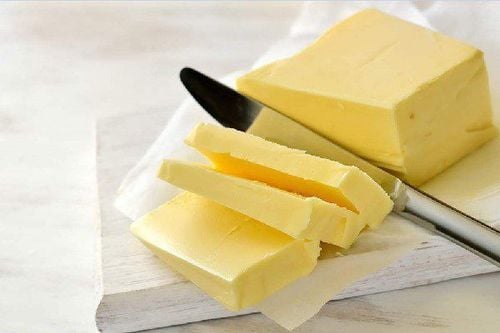
You need to make sure that the food is not too hot, to avoid burning the child's mouth. Do not put a lot of seasoning, salt, butter or sugar in your baby's food. These spices prevent children from experiencing the natural flavors of foods and they can be harmful to their health. A 1-year-old can still choke on food because he doesn't learn to chew and crush food until he's 4 years old. Give your child foods that have been mashed or cut into small, easy-to-chew pieces. Do not give your child peanuts, whole grapes, cherry tomatoes (unless they are cut into pieces), carrots, nuts, a whole sausage, sticks or hard candy, or a piece of peanut butter. Make sure that children only eat while sitting and supervised by an adult. Although 1-year-olds may want to do everything at once, such as eating and running, this can make them more susceptible to choking.
Trắc nghiệm: các chỉ số cần chú ý về sự phát triển thể chất của trẻ
Chiều cao, cân nặng của bé ở từng giai đoạn nên là bao nhiêu là bình thường, bao nhiêu là bất thường? Cùng ThS.BS Ma Văn Thấm điểm lại xem bạn đã nắm được các chỉ số phát triển thể chất của bé chưa nhé!The following content is prepared under supervision of Thạc sĩ, Bác sĩ y khoa, Ma Văn Thấm , Nhi , Phòng khám Đa khoa Quốc tế Vinmec Dương Đông(Phú Quốc)
2. Best foods for 1-year-olds Bananas, peaches and other soft fruits During this time, babies begin to develop grasping abilities, including holding food on their own. At this time, you should give your baby foods that are easy to handle to create enjoyment for them. Fresh and soft fruit is a great choice for 1-year-old babies. They not only provide essential nutrients but also help reinforce healthy eating habits for children. Slice bananas, seedless oranges, strawberries, peaches or mangoes and introduce them slowly to your child. Avoid using large pieces of fruit, as they can be dangerous for children, causing them to choke. Cut into halves or quarters and never let your child eat whole fruit. If your child is not interested in eating new fruit, don't stress too much. In fact, studies show that a child typically needs to be exposed to a new food 6 to 15 times before accepting it into their diet. Soft fresh fruit can also be easy to make into a smoothie or make a great snack for kids. However, according to the Centers for Disease Control and Prevention, you need to make sure your child eats any. any fruit within 2 hours of coming out of the refrigerator. If fruit is left outside and above 90°F (32°C), that time should be reduced to within 1 hour.
Yogurt and milk At this stage, babies can slowly give up breast milk or formula, this is a good time to introduce other types of milk.

Milk and yogurt are excellent sources of protein and bone-building calcium, which are also beneficial for the development of teeth. One cup (244 ml) of whole milk provides 39% of the daily value (DV) of calcium a 1-year-old needs each day, as well as 8 grams of protein. Although you can continue to breastfeed your baby until age 2 or so, whole milk or yogurt can also be used with meals or as a snack. Yogurt can be topped with diced fresh fruit or a drizzle of honey.
Honey can be used for children 1 year old, absolutely do not use honey for children under 1 year old because it can put children at risk of poisoning and serious infection. While milk is generally safe at this age, you need to watch for signs of an allergy be sure to watch for signs of a casein allergy.
Casein is a type of protein in milk. About 2-3% of children under 3 years of age have a casein allergy. This condition is common in babies who are given whole milk at an early age. You should introduce new foods to your baby, including milk and dairy products, so that your baby adapts slowly. In fact, when introducing new foods to babies, it is necessary to monitor their response from 3 to 5 months after they are introduced. Symptoms of a casein allergy include wheezing, hives, vomiting, and diarrhea. If your child experiences these or other reactions when introduced to new foods, stop feeding them and take them to a medical facility for a checkup.
Also, you should consult your pediatrician before substituting animal milk for plant milk, as they are generally not recommended for toddlers due to their lack of essential nutrients. for growth.
Oatmeal Oatmeal is a great choice as your child makes the transition from swallowing to chewing. Oatmeal is easy to swallow and rich in nutrients, including high amounts of protein, carbs, vitamins, minerals, and healthy fats. In addition, oats also provide a rich amount of fiber, which helps to keep the digestive tract of children healthy.
Prepackaged oatmeal products look very attractive and eye-catching, but you should make your own oatmeal for children because available products often add a lot of sugar. If you are too busy and don't have enough time to do it, you can soak the oats overnight in the refrigerator.
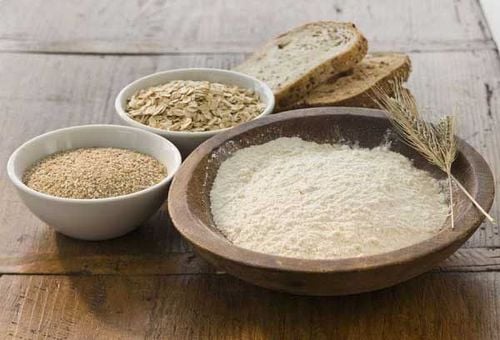
Mixing oats with milk instead of water will also help children absorb more nutrients. Offer your child oatmeal with diced strawberries, bananas, or their favorite fresh fruit.
Whole grain pancakes Pancakes are a big hit with kids, and whole grains are nutrient-dense foods with vitamins, minerals, and fiber. So whole grain pancakes are a good choice for a 1-year-old... Whole-grain pancakes provide gut-friendly prebiotics that help feed beneficial gut bacteria. Children are also very easy to hold them when eating.
Eggs Eggs are foods that bring many health benefits to children and adults.
Eggs support eye health and brain development. Eggs are rich in protein, healthy fats and a host of other nutrients. You can fry eggs or boil eggs for children. When your child tries to feed himself, you should cut the eggs into bite-sized pieces.
However, you should be aware that eggs are one of the eight most common food allergens for children. Symptoms can include hives, stuffy nose, digestive problems, cough, wheezing, and trouble breathing.
Eggs can cause an allergic reaction but rarely cause anaphylaxis, a serious life-threatening reaction that can block airways, cause dizziness or loss of consciousness.
Tofu Tofu is a food rich in nutrients, including iron, calcium and protein. 56g of tofu contains nearly 1 mg of iron and provides 12% of the daily calcium requirement for children. Tofu can be mixed into smoothies or mashed with bananas, avocado, or cheese. Add tofu to soups, or stir-fry with your child's favorite seasoning.
If your child has a soy allergy, you should avoid giving them tofu.
Chicken Feeding your child tender chicken or ground turkey is a great way to give your child extra protein. This is an essential nutrient for a child's growth. You can start by giving your child pureed chicken or tenderloin. Boil the meat first, then add milk, broth, or yogurt to soften the mixture in a blender or food processor. When children feel more excited about self-feeding, stir-fry meat or cut into small, mouth-watering pieces.
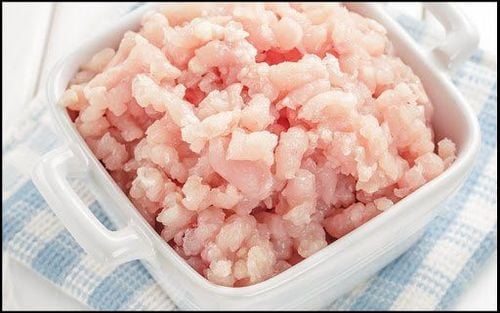
Don't let your child eat tough cuts of meat as these can be too difficult for them to chew or swallow. Also, stay away from spicy or sour spices, as it can cause stomach upset.
Water Children 1 year old should drink at least one 8-ounce glass (237 ml) of water each day. Children may need more if they are active, when they are sick or in hot weather.
Avocado Avocado is a great food for 1-year-olds. Avocados are rich in nutrients, including healthy fats, that are beneficial for brain and heart functioning in babies. Half a cup of diced avocado (75 grams) provides almost 9 grams of healthy unsaturated fat. Avocados can be sliced or mashed and spread on bread with whole grain juice or crackers. Alternatively, you can mix avocados with other soft fruits and vegetables, such as cooked pumpkin or sweet potatoes.
Steamed Broccoli, Peas and Carrots Steaming vegetables, such as broccoli, peas and carrots, is a great way to introduce children to this food group.
Broccoli, carrots and peas are packed with fiber and vitamin C. Furthermore, carrots contain lutein, which supports eye health, while peas are rich in protein, which helps support muscle building corn. Can be served with other vegetables, including parsley, sweet potatoes, and squash.
Mashed beans A half cup (130 grams) of mashed beans provides almost 39% of your child's daily iron needs. Mashed beans - whether black or white, are foods with a rich iron content. Mashed beans can be prepared with a food rich in vitamin C, such as broccoli, diced tomatoes or mashed sweet potatoes, which will help children absorb iron much more effectively. This combination is especially important for toddlers and non-meat eaters, as the body absorbs iron from animal sources more efficiently than iron from plant sources.
Hummus Hummus is a sauce that provides a good dose of protein, healthy fats, vitamins and minerals. Spread hummus over whole-grain crackers, a piece of cheese, or steamed veggies.
You can buy this product at the store or you can also make it yourself because the way to prepare this dish is also quite simple. You just need to puree a little garlic, sesame butter (tahini), green beans and olive oil until smooth.
However, sesame used to make butter is among the top 10 most common allergens, accounting for 17% of children. Therefore, you need to be especially careful when using this product.
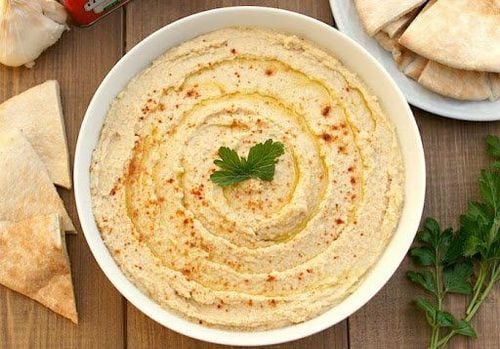
Please dial HOTLINE for more information or register for an appointment HERE. Download MyVinmec app to make appointments faster and to manage your bookings easily.
Articles refer to sources: healthychildren.org, healthline.com





